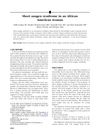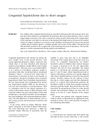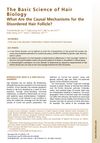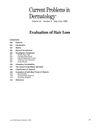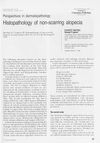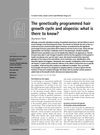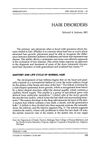Short Anagen Syndrome in a Girl with Curly Dark Hair and Consanguineous Parents
November 2012
in “
Journal of the American Academy of Dermatology
”
TLDR A 3-year-old girl has short anagen syndrome, causing her hair to stay short.
A 3-year-old Caucasian girl with consanguineous parents was evaluated for short hair since birth. Despite normal hair density, she had numerous vellus and intermediate hairs, with a trichogram showing 31% telogen hairs. Her hair, which had never been cut, had a maximum length of 4 cm, with no signs of breakage or abnormalities, indicating a diagnosis of short anagen syndrome.
